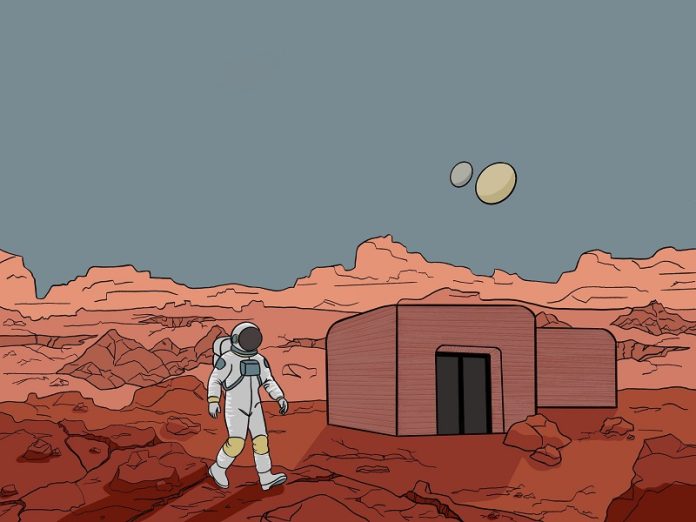
The dream of living on Mars has been around for decades, often featured in science fiction books and movies.
But with successful Mars landings and continued exploration, scientists are now taking serious steps toward making that dream a reality.
One of the biggest challenges is figuring out how to build homes and shelters on Mars—without sending heavy building materials all the way from Earth.
That’s where Dr. Congrui Grace Jin from Texas A&M University comes in.
Together with researchers from the University of Nebraska-Lincoln, Jin has developed an innovative way to grow building materials directly on Mars using the planet’s own soil, known as regolith.
Their work was recently published in the Journal of Manufacturing Science and Engineering.
The solution involves something both simple and brilliant: mimicking natural lichens—organisms made up of fungi and algae or bacteria living together.
Jin’s team created a synthetic version of lichen using two types of microbes: filamentous fungi and cyanobacteria. Together, these microorganisms can grow and survive without any help from humans, using only the natural resources available on Mars: air, light, and soil.
Here’s how it works. Cyanobacteria are tiny organisms that can capture carbon dioxide and nitrogen from the air, using sunlight to make oxygen and nutrients through photosynthesis. These nutrients help the fungi grow.
The fungi, in turn, are good at binding particles together and helping minerals form.
They also give water and minerals back to the cyanobacteria. As they work together, the microbes produce sticky biopolymers that hold Martian soil particles together—essentially turning dust into building blocks.
Previous ideas for building on Mars involved using chemical binders like magnesium or sulfur, or relying on single strains of bacteria to grow building materials.
However, those methods require outside support, like nutrients or constant monitoring—something that isn’t practical with so few people on Mars. Jin’s method stands out because the system is completely self-sufficient and requires no human intervention once it starts.
The team’s synthetic lichen system is a major step forward in making autonomous construction possible on Mars. It can grow by itself and form strong, solid structures just from Martian soil, sunlight, and a simple liquid medium. That means future astronauts could arrive on Mars to find buildings already taking shape—grown from the ground up, quite literally.
Next, Jin’s team is working on turning this living material into printable “regolith ink” that can be used in 3D printing. With this technology, scientists could eventually print everything from houses to furniture right on the Martian surface, using nothing but local materials and sunlight.
This breakthrough opens the door to a future where building on Mars—and perhaps other planets—isn’t just possible but self-sustaining, affordable, and incredibly efficient. As Jin puts it, the potential of this self-growing material is enormous for making long-term human exploration and colonization of Mars a reality.



